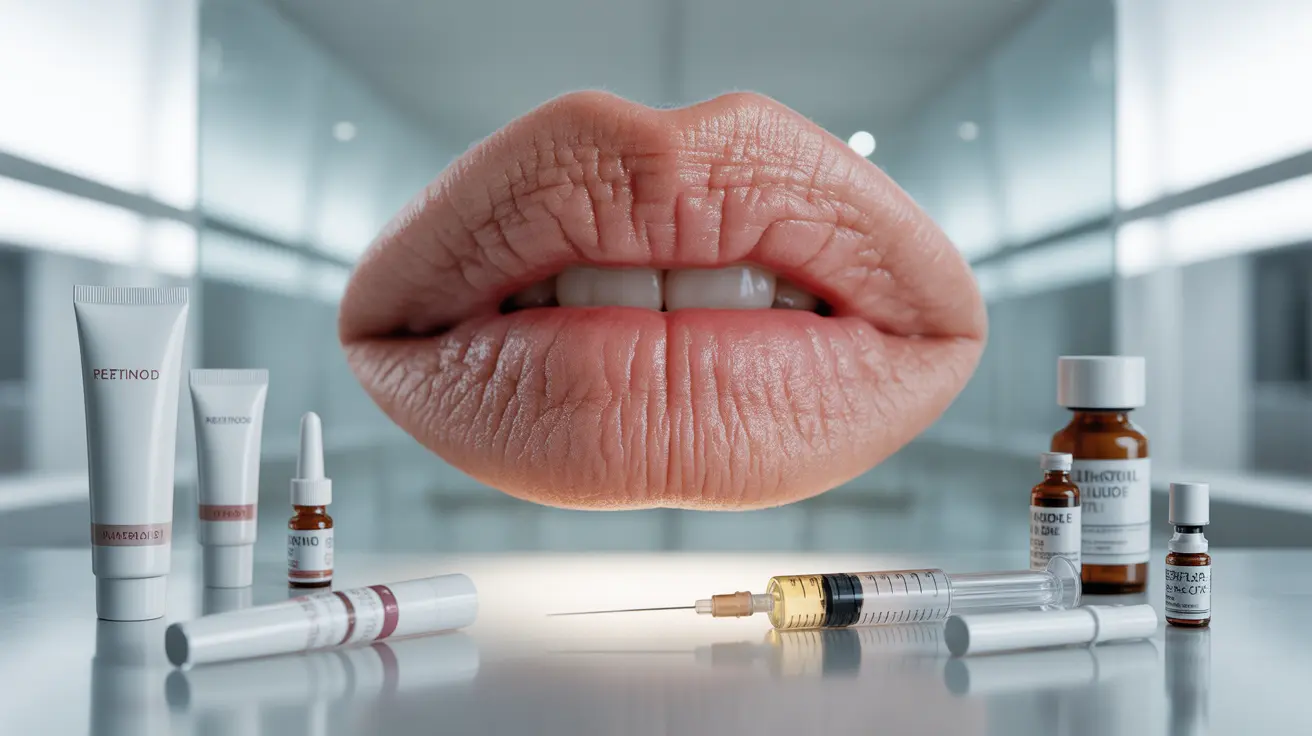If you've noticed your lips becoming increasingly wrinkled, you're not alone. This common cosmetic concern affects many people as they age, leading to vertical lines, loss of volume, and changes in lip texture. Understanding why lips become wrinkly and exploring available treatment options can help you make informed decisions about your lip care routine.
In this comprehensive guide, we'll explore the science behind lip wrinkles, examine effective treatments including dermal fillers, and discuss what you can expect from various interventions. We'll also address important safety considerations to help you make informed decisions about lip treatments.
Understanding Why Lips Become Wrinkly
Lips naturally develop wrinkles due to several factors, with aging being the primary cause. As we get older, our bodies produce less collagen and elastin, two proteins essential for maintaining skin elasticity and firmness. This natural decline affects the delicate lip area particularly noticeably.
Other contributing factors to lip wrinkles include:
- Sun exposure and UV damage
- Smoking and repeated lip movements
- Dehydration
- Environmental factors
- Genetics
Prevention and Daily Care for Wrinkled Lips
Taking proactive steps to prevent and minimize lip wrinkles can make a significant difference in their appearance. Regular maintenance and protection are key to maintaining smoother, more youthful-looking lips.
Essential Prevention Tips
Consider incorporating these practices into your daily routine:
- Use lip products with SPF protection
- Stay well-hydrated
- Apply moisturizing lip balm regularly
- Avoid smoking and excessive sun exposure
- Use a humidifier in dry environments
Treatment Options for Wrinkled Lips
Several effective treatments are available for addressing lip wrinkles, ranging from non-invasive options to medical procedures. Each approach offers different benefits and varying degrees of results.
Non-Invasive Treatments
These gentle approaches can help improve the appearance of mild lip wrinkles:
- Topical retinoids
- Peptide-rich lip products
- Hyaluronic acid serums
- Gentle exfoliation
- Moisturizing masks
Dermal Filler Treatments
Dermal fillers have become increasingly popular for treating lip wrinkles due to their effectiveness and relatively quick results. These injectable treatments can smooth vertical lines, enhance lip volume, and improve overall lip appearance.
Common types of dermal fillers used for lips include:
- Hyaluronic acid-based fillers
- Calcium hydroxylapatite fillers
- Poly-L-lactic acid fillers
Frequently Asked Questions
Why do my lips get wrinkly as I age? Lips become wrinkly with age due to decreased collagen and elastin production, sun damage, and repeated muscle movements. The thin skin of the lips makes them particularly susceptible to showing signs of aging.
What are the best treatments to reduce lip wrinkles? The most effective treatments include dermal fillers, proper hydration, sun protection, and specialized lip care products containing retinoids or peptides. A combination approach often yields the best results.
How do dermal fillers work to smooth wrinkles on the lips? Dermal fillers work by adding volume beneath the skin's surface, helping to smooth out wrinkles and restore lost volume. They can also stimulate collagen production, leading to longer-term improvements in lip appearance.
Are lip wrinkle fillers safe and what side effects should I expect? When administered by qualified professionals, lip fillers are generally safe. Common side effects include temporary swelling, bruising, and tenderness. More serious complications are rare but possible, making it essential to choose a certified provider.
How long do results from lip wrinkle filler treatments typically last? Results from lip fillers typically last 6-12 months, depending on the type of filler used and individual factors. Some newer formulations may last up to 18 months with proper maintenance.
Taking care of your lips and choosing appropriate treatments can help maintain their appearance and health. Always consult with a qualified healthcare provider before starting any new treatment regimen.




